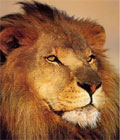

Kaffir
Folk-Lore
by Georg McCall Theal
Introductory
Chapter Regarding the Kaffirs
The
Story of the Bird That Made Milk
The
Story of the Girl Who Disregarded the Custom of Ntonjane
The
Story of Demane and Demazana
The
Runaway Children; or, The Wonderful Feather
The
Story of Ironside and His Sister
The
Story of the Cannibal's Wonderful Bird
The
Story of the Cannibal Mother and Her Children
The Story of the Girl and the Mbulu
The Story of the Wonderful Horns
The Story of the Great Chief of the Animals
The Story of Lion and Little Jackal
The Story of the Girl and the Mbulu
THERE was once a widow woman who had one son and two daughters. On a certain day she went to her garden, talking with her one of the girls. While she was away the boy quarrelled with his sister and killed her.
In the course of the day the woman sent the gi rl that was with her to the hut, and when she came there a fly told her what had happened. She did not believe it.
Then a mouse told her the same thing, but still she did not believe it was true.
Afterwards the fly told her to look in a certain place, and there she saw the head and the bones of her sister.
When the woman came home and found out what had happened, she killed her son. Then she gave the girl a stick, and told her to go to her uncle's house, saying that when she got there she must strike the ground with the stick, and all the clothes and other things that belonged to her would then rise up out of the earth. The woman said she was now all alone, and therefore intended to kill herself.
The girl was very sorry, but she did as her mother told her. When she was a little way off, she looked back and saw smoke coming out of the hut, from which she knew that her mother had burned herself and was no longer a person under the sun.
After this she met an old woman, who called to her, but she took no heed and walked on. Next she met a mbulu at a place close by a river. The mbulu said, whoever wetted any part of their body.in crossing, the river must go in and bathe. The girl was standing on the bank, and the mbulu struck the water with its tail and splashed it in her face, so that she had to go in and bathe. Then the mbulu took her clothes and put them on.
When the girl came out of the water she asked for her clothes, but the mbulu said: "I will give them when you are dry."
So they went on together. After a while the girl asked again, and the mbulu said: "I will give them when we get to the village."
But when they arrived there the mbulu said: "You must tell the people here that you are my servant, and that I am the daughter of a chief."
The poor girl was so afraid that she promised to do so. They were well received at the village, because the people believed that the mbulu was a great person. They wondered at her voice, but she told them she had been ill and her throat was not well yet.
After a time one of the men of that kraal married the mbulu, and the real girl was sent to the gardens to drive the birds away from the corn. While engaged in this occupation she used to sing about the mbulu taking her clothes and passing itself off for a person, until the women who worked in the gardens took notice of this song of hers.
Then they made a plan to find out if what the girl was singing was the truth. They said: "The tail of a mbulu will want mice and fat," so they set snares to catch the mice. In the night the tail was pursuing mice, and itself got fast in a snare. The mbulu then asked the man who was married to her to go and get some medicine, as she was sick, and when the man went she took off the snare.
After this they made another plan. They said: "The tail of a mbulu will seek milk," so they dug a hole in the ground, put milk in it, and required every one in the village to jump over the hole. The mbulu was unwilling at first, but they urged her. She tried to jump quickly, but the tail could not pass the milk. When it went down the people saw that this was a mbulu, so they killed it and buried it in that hole.
After this the same man who had married the mbulu took the girl to be his wife. She had a child, and one day, when it was playing a square pumpkin came out of the ground where the mbulti was buried, and tried to kill the infant. But the people chopped the pumpkin in pieces, and burned it. They afterwards threw the ashes into a river, so that nothing more could come of that mbulu.
End Notes
These notes originally appeared at the end of the book and also appear on the Notes page of this ebook.
The mbulu is a fabulous creature, firmly believed in by little folks. It can assume the human form, but cannot part with its tail. One of its peculiarities is that it never speaks the truth wben it is possible to tell a falsehood.
The text came from:
Theal,
Georg McCall.
Kaffir Folk-Lore. London:
S.
Sonnenschein, Le Bas & Lowrey, 1886.
Amazon.com:
Buy the book in paperback.
©Heidi
Anne Heiner, SurLaLune Fairy Tales
E-mail: surlalune@aol.com
Page last updated September 6, 2006
www.surlalunefairytales.com







